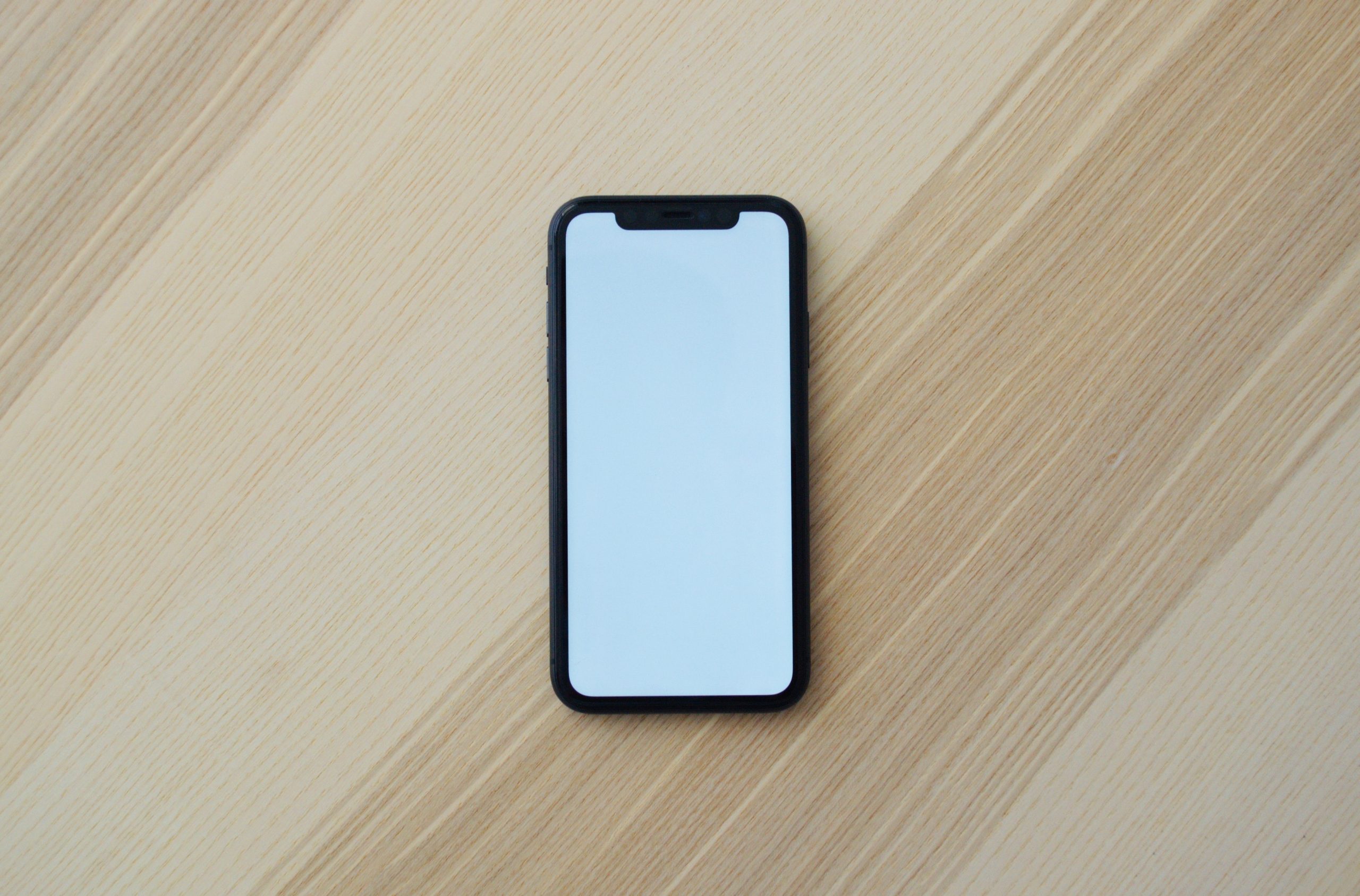MOBILE CHANGES EVERYTHING SERIES
Table of Contents:
- Background / introduction
- Findings
- How has mobile impacted business?
- How will mobile impact business tomorrow?
The Situation
The confectionery company I worked for back in 2012 was worried, they were very worried. Most confectionery sales, specifically products which are immediately consumed (single packs) are not pre-planned purchases. Shoppers are usually paying for planned purchases when they grab a packet of gum or bar of chocolate as they check-out.
New technology was starting to emerge, and retailers were starting to dream of a retail model beyond self-checkout.
Self Check-out
Back in the early 1990s, ‘savvy’ retailers introduced self-scan.
We will simply get the shopper to scan all of their purchased items and manage the payment process, their selves – genius!
The issues are, that people hate scanning items and people hate waiting for staff if something goes wrong, or they require authorization. And let us not forget the haunting voice, ‘unidentified item in the bagging area’.
Retailers on the other hand did experience product losses/shrink, (there are, unfortunately, a contingent of the population who are dishonest). But, it was the staff savings, to hell with the customer experience!
Shoppers adapted and started adopting self-scan, particularly for smaller baskets. Retailers, however, had bigger dreams.
What would happen if shoppers scan items as they shop and then just walk out of a store and payment is taken automatically? We would not even need to clutter the front of the store, and then we could use that space to sell more stuff!
Could this become a reality? Think of the staff savings, but wait some people can be dishonest! And what about produce? And what about the Customer Experience!
My assignment…… go build a global mobile strategy!…
Ambiguous Environment
The scope, technology, and potential of mobile are continuously changing.
So, no checkouts. Just an app, a process and you walk out of the store. All supported by a backdrop of cameras and sensors which would leave Fort Knox to shame.
The above scenario is real. Amazon in the US has had some small concept stores with these capabilities for the best part of the last 10 years, and they have long been popular in Asian countries. Toronto just came to the table with ‘Aisle 24’ a new 24-hour convenience store which is completely cashless back in October 2021.
Working with Global Consultants
I joined a global team based out of the UK, and the department was created with a budget. The consultants started proving their perspective, but it became abundantly clear that no one knew where mobile was going to take the consumer-packaged goods industry (CPG).
So, I did what I always do. I broke down the problem and found this wasn’t going to be a significant issue, this was going to be a massive opportunity. Many individuals, unfortunately, still held on to the notion, that it was going to be detrimental to our business. This wasn’t the doom and gloom reality that so many executives were convinced it was at the time.
The Problems:
Where do I start?
- Retailers: So, we must build an app – got it
- And somehow, we use the camera feature, to scan barcodes – got it
- So, we want shoppers to download a specific app – got it
- And then they must register – got it
- And then they must link to a digital wallet – got it
- Not just any wallet, but our choice – got it
- We’re going to do a trial – got it
- We will make them pay at self-check-out
- Wait, who pays for all this? Who makes this happen?
- Does anyone know any app builders?
Wait again, what happens if customers don’t have data to download the app (this was a factor then), that could be a problem..wait, we will flood the store with free Wi-Fi. Again, who pays for all this? Who makes this happen?
There were three massive problems at the time. WIFI in grocery stores was atrocious. It was slow which dead spots, so many dead spots, also we were in a time when data was expensive. The next problem was how do they pay, there wasn’t Apple Pay. Google had ‘wallet’ but it wasn’t popular, and who was going to trust a small third-party app with their credit card information? The last problem was the biggest, shrink or theft. How could a retailer prove a shopper scanned and paid for all their items? It is bad enough for retailers to manage self-check-out, where everyone must go to a specific location. These were the big three issues, but there were many more. The phone’s ability to scan barcodes was, also, very poor, it would never just scan, and took a great deal of patience just to get it to scan a single item.
A Future Proofed Model
So, I came in with an unpopular opinion. I built my hypothesis and developed business models. Mobile wasn’t doom and gloom. We weren’t going to see widespread digital payment. Instead, mobile was and should be used to interact with the shopper. ‘For the first time in a physical environment, we have the ability to influence at the point of decision’.
I need to reiterate this because I feel that a lot of individuals still don’t understand the power of this statement:
‘For the first time in the history of box, we have the ability to influence at the point of decision’.
My objective was to see how I can make mobile positive for all three parties: retailers, suppliers, and shoppers. Everyone must win, to march in this level of investment and change.
Requires Breakdown of Silos
Digital doesn’t like silos and functions. That’s why most companies have a hard time developing and advancing digital within an organization. Mobile should not just fall in the marketing department, which is where it usually resides. It impacts sales, category, supply chain, customer service, and many more. You must have a holistic approach where digital becomes the new DNA of the company.
Retailers Test & Learn
We started working on some fun ‘test & learns’ globally. Retailers in the US and Sweden were leading the way. A-hold in the US as an example introduced a successful scan & shop model. Shoppers would scan items as they shopped using the store app. Their point of differentiation is that they designed their entire promotional strategy around digital. If I scanned a Heinz Ketchup bottle, it would ‘pop up’ Heinz Ketchup is on sale with Heinz Mustard in a double pack. It provided suggestions, it supported the shopper, and it created a reason for customers to use it. It was a brilliant strategy, and again I need to reiterate that all actors need to win, and this was an example of all of them winning.
Massive Exhaust
Data beat’s opinion and knowledge is power! The biggest problem is data overload and not knowing what to do with it. In this new dawn, retailers had the ability to garner unprecedented levels of data from their customers, which they could then leverage to influence and form new strategies. Some retailers are leaps and bounds ahead of others. Many have lost their way.
Digital scares some people! It doesn’t need to if you systematically break it down.
Financial crises, wars, and viruses have taken many entities and initiatives off track. They have deprioritized and or disinvested. They have made the mistake that I see over and over, again. Not only that, but they seem to forget that their most important asset is their customers and customer satisfaction.
If you have data, and you believe in digital, you will create a strategy that is far superior in every way to your competitors. It will give you a massive competitive advantage like no other.
How mobile has impacted business
Mobile is King
As the cost of data continued to become more accessible in the US. The penetration of smartphones has reached well over 85% in North America. Sorry, Canada we have a duopoly, and based on this we still pay the highest data charges in the world!
Before the pandemic, projects considered individuals without either access to smartphones or individuals who struggle with the technology. Provisions were always made; this attitude has since shifted significantly, with projects being fast-tracked. The consensus now is, if you’re left behind, you’re left behind!
Mobile now accounts for over 54% of web traffic, excluding tablets. Websites, therefore, need to be optimized for mobile. This is no longer a nice-to-do, it is essential!
Transparency
Retailers panicked. Especially retailers with big-ticket items. A new era was upon us during the teen years of the 2000s ‘show rooming’. I can wander into Best Buy to view the TV I want to purchase, touch it, and have a spin with the remote control. How much do you want for it? I’ll make that purchase online.
Retailers were pulling their hair out, stalking shoppers. It became the battle between physical and digital. If only retailers were to take a step back. Evaluate the situation and understand the answer was customer experience! Provide a superior customer experience and a superior connection with your customer, and you will never need to fear a lower price online.
Very few retailers did a good job, and most bumbled their way through this period and are continuing to struggle as they fail to adapt or change.
Convenience
Retailers and in particular ‘Grocery’ have a huge advantage. Shoppers have daily needs, and they make lists and can be upsold in so many ways. Few retailers, unfortunately, have taken advantage of this.
I highlighted convenience as a key pillar in creating the adoption of any mobile strategy. Shoppers have to be given a reason to use new technology, it has to do something for them or save them something, be it money or time.
Dynamic Journey
The Shoppers journey changed. People began using mobile to their advantage and a power shift ensued. Instead of short, predictable decisions processes, shoppers were becoming more sophisticated and savvier. The shopper journey was becoming far more dynamic.
Mobile was the driving force. At any point in the ‘shopper journey’ a shopper can use mobile to level the playing field!
Mobile Orders
Ordering via mobile never really amounted to much pre-pandemic. The reasons weren’t there. Some retailers did a better job than others. For example, Starbucks was certainly one of the companies leading the charge and providing incentives and rewards for participation.
This, however, changed with the pandemic. Some have estimated it sped up overall adoption by 5 to 10 years. People now had a real reason to use it. Ordering food for delivery meant you reduced human interaction. Ordering Starbucks through the app meant it was ready for pick-up.
Mask on, hold your breath and rush to retrieve that Tall Frappuccino. 25% of Starbucks orders are now mobile through their app, and I am sure that number has increased.
Mobile Payment
As we have previously discussed, the pandemic accelerated change. This was also, evident with mobile payment. When the pandemic started, traditional money became the pariah. Businesses started refusing cash and insisting on digital transactions. Banks responded with easier tap options for debit cards.
It is an interesting point that any business in Canada can take any form of payment they decide. Businesses can refuse you and refuse your form of payment.
Grocery Failed to take Advantage
They took their eye off the ball. Canada was way behind from a global perspective. Loblaws did a few token gestures, and they continue to have a division called Loblaw digital.
The big hitters on a global stage were Tesco (UK) and Walmart (US). Tesco has a financial crisis and de-prioritized digital, while it looked to right the ship. Walmart struggled at the time because such a large contingent of its shoppers did not have access to smartphones or if they did, they had restrictive data plans. They were never able to get adoption to a high enough level.
The pandemic changed a lot of things. It changed a lot of priorities. It will be interesting to see how mobile evolves in the next phase of its evolution.
How Mobile Will Impact Business Tomorrow
Data Data Data
As we’ve discussed, the single most valuable gift mobile gives us, is data. Rich data exhaust, which more specifically now includes location metrics. As a society, we’ve been challenging ourselves for a while now – what do we do with all this data?
Controlling The Way, We Think / Behave
This is where most have fallen over. But we have also, had some new players join the party, we now have social media. Social Media not only took a huge chunk of mobile users’ attention. Social Media companies also, developed the playbook on how to subsequently leverage the data from the devices, to their advantage. Not only have they been the gatekeepers of the data, which they have happily resold and repurposed. They became the masters of rigging the algorithms to their benefit.
At this time, retailers need to determine which model they are going to follow. Do they buy data and leverage it, or do they generate their own data from customers and leverage that instead? There are no real right or wrong answers, it really depends on the scale of the retailer, how established it is, and even comes down to factors like customer loyalty.
Privacy Versus Benefits
Younger generations don’t seem to have an issue with providing corporations access to their everyday lives. Apps provide companies with direct access to a user’s information via either camera, microphone, or other mobile functions. Users routinely blindly sign T&Cs that detail how and what will happen to collected data, including their intent for financial profit.
Who said social media was free?
Tracking Invited Home
We’ve even invited these corporations into our homes via smart speakers. Google Nest (formerly Google Home), and Amazon Echo continuously listen to every sentence and every word spoken. If you have one of these devices, every second of your life at home is being permanently recorded and preserved for whichever purpose, they deem fit.
Future Digital Shopping Journey
The digital shopping journey is still the area that has the most potential for retailers to tap into. The initial foray into this sphere began with crude beacons in-store, which relayed a message to passing shoppers. The issue became that shoppers had to have an app and or selected functionality selected in order for the technology to work. Next, came the issues with distributing the infrastructure, and of course who pays for it?
We’ve gone past this era. Retailers post Covid now need to regroup and determine what role mobile is going to play in future tactics and strategies. What is the future of the digital shopping journey?
Future Mobile
So, where will the future of mobile take us? We’ve seen devices get smaller and smaller and then bigger and bigger. The cycle of evolution will continue with new technologies and advancements incorporated. Devices in 10 years might be unrecognizable or beyond our current ability to comprehend.
Right now, individuals are getting chips embedded into their hands, in order to facilitate contactless pay! Google, who will become the most powerful company in the world, controls one thing and that’s data and Google has gone on record to say the future of the internet is mobile….maybe in a few years this would have changed to……. the future is mobile, period.
Mobile Changed Everything
Remember, mobile changes everything, and mobile changed everything! One thing is for certain, mobile or the next generational interpretation of mobile will continue to change everything!


